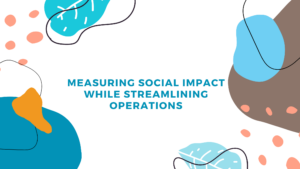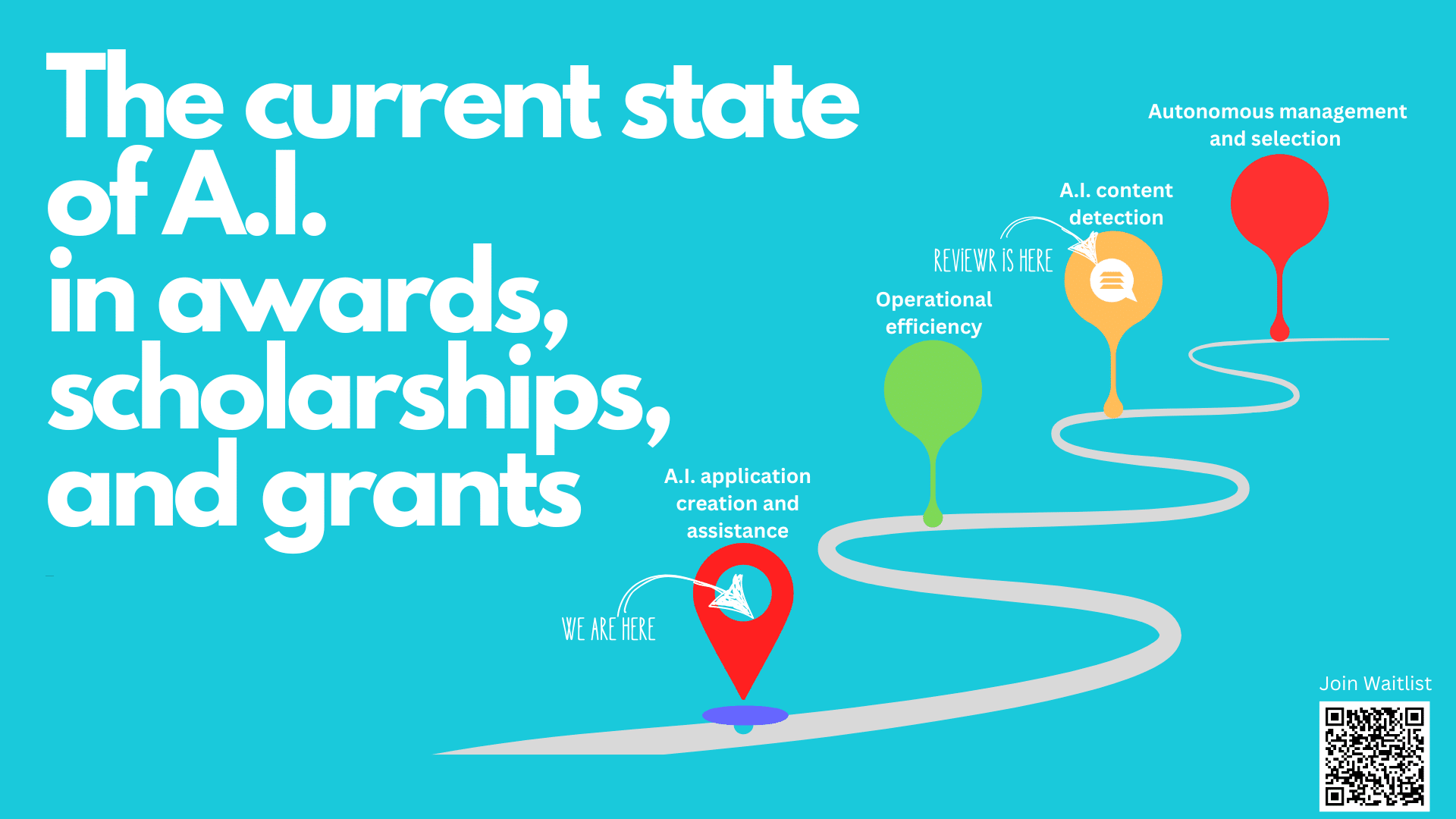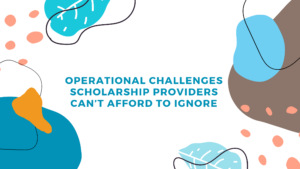
Measuring Social Impact While Streamlining Operations
Schedule a Demo View Interactive Tour A Deep Dive into How Brands and Foundations Can Power Purpose-Driven, Data-Backed Scholarship and Grant Programs
On November 30, 2022, OpenAI (ChatGPT) changed the game for forever in how organizations manage member recognition awards, scholarships, grants, abstracts, fellowships, and so much more.
Before this date – organizations relied on short form content and personal storytelling to separate applicants/nominees from raw metrics and from their peers. They were a way for applicants to showcase their unique qualities and personalities – separating them from the thousands of other applicants in the competitive award, grant, scholarship, fellowship, and abstract ecosystem.
So what happened on November 30th? OpenAI released an early demo of ChatGPT resulting in the A.I. chatbot going mainstream. Instagram and TikTok were flooded with people recording innovative ways to leverage ChatGPT to streamline tedious tasks such as travel planning, writing computer code, and more. Google search trends went crazy.
Fast forward less than 2 years and mission driven organizations, associations, foundations, and more are now facing challenges never seen before – A.I. generated applications and content. What was once a way to separate qualified applicants from a crowded room of other qualified applicants for limited resources is now a game of cat and mouse to identify authenticity. And while we are 17 months removed from the introduction of ChatGPT – we are only at the precedent of how A.I. will impact organizations in the coming years. This Google search trend looks awfully familiar.
Understanding A.I. and its Current Impact on awards, grants, scholarships, abstracts, fellowships, and so much more.
Artificial Intelligence (A.I.) operates by analyzing large amounts of data and learning from patterns to make decisions or generate content. Applicants frequently use A.I. for writing by inputting prompts or topics, allowing the A.I. to assist in structuring essays/content or solely writing them for the applicant. In recent research amongst scholarship providers, we have identified a significant concern of scholarship essays being written with the assistance of A.I. tools like ChatGPT. This research highlights a growing reliance on A.I. for enhancing the quality of submissions, although there is a crucial distinction to be made between using A.I. as a supportive framework versus having it generate content from scratch.
So, what does the current state of A.I. utilization look like?
Ok, so award, grant, scholarship, abstract, and fellowship applicants copy and pasting essay prompts into tools such as ChatGPT and using the results as their own work is probably not what organizations are looking for. But in what ways can A.I. be leveraged for good in these highly competitive application based programs?

Mission driven organizations manage quite a few competitive submission based programs such as awards, grants, scholarships, fellowships and abstracts that have a wide range of criteria, eligibility, and requirements. Often, applicants may not be aware of the opportunities available to them resulting in underapplied programs or applicants applying for everything, and anything, resulting in wasted time and energy from both the applicant and program provider.
Capturing essential information from applicants equips program managers with the data necessary to create a personalized experience that enhances the applicant experience and strengthens data integrity.
Leverage a dual process where the nominator starts the submission by inputting who they are, who they are nominating, and why and then let the nominee finish the form by answering more personal questions about themselves.
This streamlined approach focuses on the essential elements while ensuring a comprehensive and collaborative nomination process.
Often an afterthought, yet critical to get right, is the collection of references. When an external variable such as references is added to the award nomination application and selection process we must ensure this too follows both proper protocol for data security, but also best practices.
Avoid reference letters:
Leverage reference templates:
Use Reviewrs automated reference collection process:
In a world of competitive applications, program managers are looking for ways to narrow down the initial applicant pool to a smaller number for a more indepth and thorough review.
While leveraging A.I. to completely write essays or personal stories is advised against – using A.I. to assist with generating content that empowers the applicant be the best version of themselves and position themselves for success is promoted.
Finally, the elephant in the room. We know applicants WILL use A.I. to assist with their award, grant, scholarship, fellowship, and abstract application content creation. We are also PROMOTING the usage of A.I. to help generate the framework for a well structured application and essay – so where do we draw the line? How much A.I. is too much?
Ultimately, this is a decision and question program managers must ask themselves. Here are some themes to consider:
So, what can we do to better identify the utilization of A.I. generated content and plagiarized material? Reviewr is excited to announce “Sidekick”, an integrated A.I./plagiarism detection tool for awards, grants, scholarships, abstracts, fellowships, and much more powered by Reviewr – the industry leading application management software.
Sidekick is intended to flag applicants for program managers and provide them the resources needed to make data driven decisions.
Detects what percentage of application content is A.I. generated.
Artificial intelligence streamlines administrative workflows by automating routine tasks and optimizing data management. This enhances efficiency and accuracy, empowering associations, foundations, chambers, credit unions, and more to spend less energy managing, and more energy making an impact.
At it’s core, Reviewr was developed to not only streamline administrative operational efforts, but more importantly, enhance the experience for both applicants and review teams. This means ensuring each applicant gets the fair change they deserve by eliminating potential bias reviews and unstructured review workflows. Gone are the days of applicants landing in spam and not getting included in the review or being unfairly evaluated based on personal bias.
Another component of “Sidekick” – Evaluation Normalization.
I love the show Shark Tank and “Mr. Wonderful” is easily my favorite shark. But what if the entrepreneurs pitching their business ideas got judged by different judges than one another? For example, what if I landed Mr. Wonderful but someone else got Barbara? What if the scorecards they used were on a scale of 1-30 and Mr. Wonderful gave me a 19 and Barbara gave someone a 30? What if Mr. Wonderful never gives a 20 – does that make getting a 19 bad? If the show used total and average scores than anyone that Mr. Wonderful scored would naturally be lower in the rankings – is this fair?
Introducing “Evaluation Normalization” This. Is. Big.

“Hey Sidekick, how’d we do”?

Not too shabby. The landscape of award, grant, scholarship, abstract, and fellowship management is rapidly evolving with the integration of AI technologies. As demonstrated, AI brings about transformative changes across various aspects of application management, from intelligent automation to enhanced content creation, plagiarism detection, streamlined administrative workflows, and ensuring fair, non-biased selection processes.
The utilization of AI in application management introduces efficiency and accuracy by automating routine tasks, matching applicants with relevant opportunities, and facilitating personalized experiences. Moreover, AI aids in content creation by empowering applicants to generate high-quality submissions while mitigating the risk of plagiarism through innovative detention methods.
Furthermore, AI-driven systems streamline administrative workflows by categorizing and summarizing applications, ensuring fair evaluations by matching judges with applicants, and normalizing evaluation results to eliminate bias. These advancements not only enhance the efficiency of award, grant, scholarship, abstract, and fellowship management but also uphold fairness and integrity in the selection process.
As we embrace the future of application management in 2024, it becomes evident that AI will continue to play a pivotal role in revolutionizing how awards, grants, scholarships, abstracts, fellowships and more are administered, ensuring equitable opportunities for all deserving applicants while optimizing resource allocation for organizations offering these programs.

Schedule a Demo View Interactive Tour A Deep Dive into How Brands and Foundations Can Power Purpose-Driven, Data-Backed Scholarship and Grant Programs

Schedule a Demo View Interactive Tour Insights from 500 scholarship provider interviews Bridging the Gap Between Mission and Execution Scholarship programs
